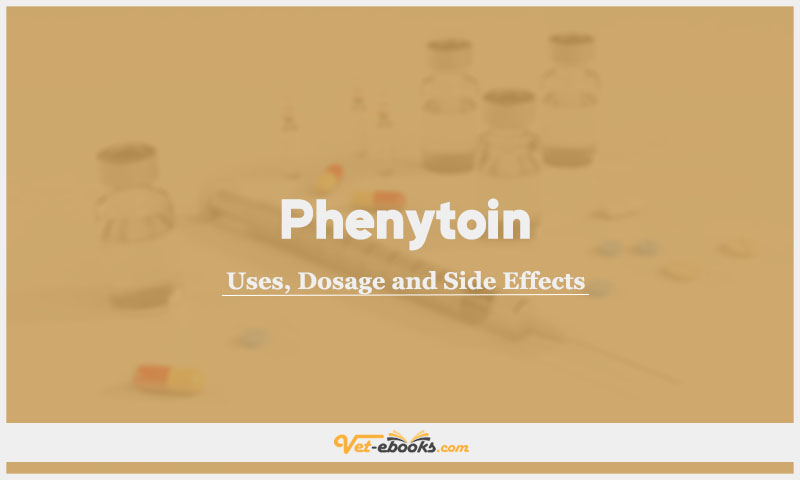Phenytoin In Dogs & Cats: Uses, Dosage and Side Effects

Overview
- Phenytoin diminishes the spread of focal neural discharges by promoting sodium efflux from neurons via the voltage-gated sodium channels thereby stabilizing the membrane and threshold against hyperexcitability.
Uses of Phenytoin
- This drug is effective in controlling epilepsy in humans but poses challenges in veterinary use.
- In dogs, rapid metabolism requires frequent high doses and is linked to hepatic toxicity.
- In cats, slow metabolism leads to easy toxicity.
- Due to these issues, it’s not recommended for routine use in dogs and cats as a maintenance therapy, with better alternatives available.
- Recent evidence suggests its potential efficacy in treating status epilepticus, particularly with the fosphenytoin preparation, which carries fewer cardiac and blood pressure risks.
- It has also been used in cats and dogs as an oral or intravenous antiarrhythmic agent and has been described in case reports for treating myokymia, though success varies.
Dose of Phenytoin in Dogs and Cats
Dogs:
- For treatment of ventricular arrhythmias: 10 mg/kg i.v. slowly; 30–50 mg/kg p.o. q8h.
- For treatment of status epilepticus: following a benzodiazepine, fosphenytoin at 15 mg/kg phenytoin equivalent (22.5 mg/kg) i.v. slowly (1 ml/min).
- For treatment of myokymia: 50–100 mg/kg p.o. q24h sustained release phenytoin.
Cats:
- Do not use.
Drug Dosage Calculator
You Should Give:
Side Effects of Phenytoin in Dogs and Cats
- Adverse effects include ataxia, vomiting, hepatic toxicity, peripheral neuropathy, toxic epidermal necrolysis and pyrexia.
Contraindications of Phenytoin in Dogs and Cats
- Do not use it as an anticonvulsant in cats.
- No longer recommended as a long-term treatment of epilepsy in dogs.
Some Notes:
- Numerous potential drug interactions are documented in human patients, particularly intricate interactions with other antiepileptic drugs.
- Phenytoin’s plasma concentration can be elevated by substances such as cimetidine, diazepam, metronidazole, phenylbutazone, sulphonamides, and trimethoprim.
- Conversely, antacids, barbiturates, and calcium may reduce phenytoin’s absorption, effects, or plasma concentration.
- Phenytoin can increase the metabolism of corticosteroids, doxycycline, theophylline, and thyroxine.
- Pethidine’s analgesic properties may be diminished, while its toxic effects may be heightened when combined with phenytoin.
- Simultaneous use of multiple antiepileptic drugs may enhance toxicity without a corresponding increase in antiepileptic efficacy.
Tip
Do You Want To Increase Your Veterinary Knowledge and Practical Skills?
You Can Now Browse and Download +3000 Books For Veterinary Professionals & Students Online.
Download Veterinary Books




















